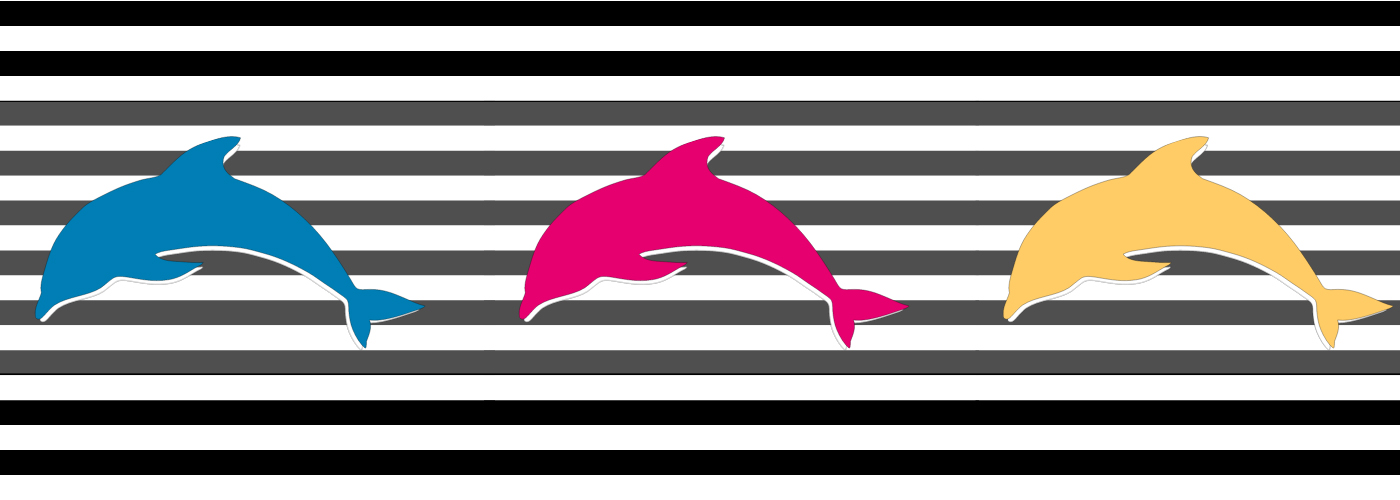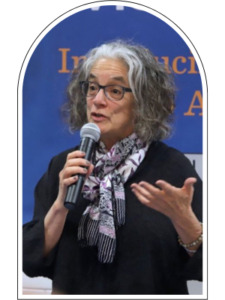Takeaways from Lainey Feingold’s 2023 Digital Accessibility Legal Update
Updated: January 12, 2024
Digital Accessibility Legal Update with Lainey Feingold – Part One [Free Webinar]
At the end of each year, Lainey Feingold joins 3Play Media to share her annual digital accessibility legal update. Because 2023 was such an impactful year for digital accessibility news and cases, Lainey split this legal update into two comprehensive sessions that covered the latest information about the United States’ legal landscape, an overview of global law and policy, and strategies for staying ahead of the legal curve when it comes to digital accessibility.
Lainey Feingold is an internationally recognized disability rights lawyer, author, and speaker. She is widely known for negotiating landmark accessibility agreements as well as developing and practicing Structured Negotiations. Learn more about Lainey’s background and legal work with disability communities on her website.
Read on to discover the top takeaways from Part One and Part Two of our 2023 Digital Accessibility Legal Update with Lainey Feingold, or quickly jump to a digital accessibility takeaway below:
- Digital Accessibility & the United States Legal Landscape
- Current United States Digital Accessibility Laws & Regulations
- What’s On the Horizon for Digital Accessibility in the United States
- How Current Digital Accessibility Laws and Regulations Are Implemented in the US
- Global Accessibility Law and Policy
- Lainey Feingold’s Best Practices for Staying Ahead of the Law
- How to Talk About the Law and Digital Accessibility
Digital Accessibility & the United States Legal Landscape
In Part One of our 2023 Digital Accessibility Legal Update, Lainey spoke about what digital accessibility is, why accessibility is a civil right, current and proposed laws and regulations, best practices to stay ahead of the legal curve, and more.
Lainey began by defining digital accessibility as disability inclusion in all things technology and the intentional practices that make the inclusion happen. She described digital accessibility as a door, explaining that “without accessibility, the doors of today’s society are closed, are locked up tight for people with disabilities.” Lainey also sees digital accessibility as a bridge–on one side are people with disabilities; on the other are technology and content. Accessibility is the bridge connecting the two.
Current United States Digital Accessibility Laws & Regulations
Lainey provided an overview and brief summarization of United States federal laws and regulations that reference digital accessibility, including:
- Americans with Disabilities Act (ADA): Largest part of the U.S. digital accessibility framework. The ADA prevents discrimination and promotes effective communication with people with disabilities.
- Section 504 and Section 508: When receiving federal funds, programs and services must be available to everyone–this includes accessibility. Technology and content must also be accessible for people to do their jobs.
- Air Carriers Access Act: Requires airline websites and kiosks to be accessible.
- False Claims Act: When selling something to the government and claiming it is accessible, but it is not, you could be in violation of this federal act, such as in this California Parks False Claims Act case.
- Affordable Care Act (ACA) Section 1557: When receiving federal funds and part of the ACA, technology must be accessible.
- 21st Century Communications and Video Accessibility Act (CVAA): Requires accessibility in communication systems, such as captions and audio description.
Lainey then discussed Web Content Accessibility Guidelines (WCAG) and how they play into existing legal frameworks in the United States. While WCAG is not specifically written into the ADA, she pointed out that WCAG gives you the tools to avoid discrimination and effectively communicate by building accessible websites.
Further, she explained that the Department of Justice uses WCAG when enforcing the ADA:
Lainey mentioned the introduction of WCAG 2.2 back in October, stating that she does not expect to see any immediate court decisions or Justice Department action happening, but that “eventually, it will roll in.”
What’s On the Horizon for Digital Accessibility in the United States
Lainey discussed what’s on the horizon for digital accessibility law in the United States, including proposed laws and possible regulations. She urged awareness of these potential laws, regulations, and guidances due to the impact they could have on digital accessibility:
Proposed Laws to Watch
- Website and Software Applications Law: A federal law introduced into Congress last year that focuses on the importance of regulations and holding accountable those who are not only covered by the ADA, but developers and people involved in the creation of technology.
- Communications, Video, and Technology Accessibility Act (CVTA): An update to the CVAA that aims to strengthen and expand requirements for captioning, audio description, sign language, and more.
- CA Bill AB 1757: A pending California bill to modify the requirements for filing a lawsuit and aims to incentivize accessibility compliance.
Possible Regulations to Watch
- Web and mobile: Further pending regulations by the DOJ for state and local governments. Lainey noted that the ADA already requires state and local governments to have accessible websites and mobile apps.
- Self-service transaction terminals and kiosks: Pending regulations which have been in the works for a long time. Lainey mentions on her website that “many legal cases require kiosks to work for disabled people.”
- Healthcare & HHS 504 Update: Health and Human Services is doing a 504 update to strengthen the original regulations, which have not been updated since 1977.
- ACA update: The ACA has regulations from 2020 and aim to make them stronger with this update.
- Video conferencing: The Federal Communications Commission (FCC) has a rulemaking process underway on video conferencing to make accessibility requirements more specific.
- Department of Education: Intends to strengthen and protect rights for students with disabilities; no action yet.
Guidances to Be Aware Of
- DOJ & HHS Telehealth Guidance (07/2022): Lainey suggests anyone involved in health care review this guidance, as it contains valuable specifics about what the law already requires.
- DOJ & EEOC AI Hiring Tool Guidance (05/2022): Guidance created by the DOJ and Equal Employment Opportunity Commission (EEOC) on AI hiring tools. Lainey suggests reviewing if you use AI hiring tools or are a person with a disability impacted by the use of AI hiring tools.
- Joint DOJ & DOE Dear Colleague Letter (07/2023): One of the most direct and comprehensive assessments to date on how the ADA and Section 504 apply to online content produced by higher education institutions.
How Current Digital Accessibility Laws and Regulations Are Implemented in the US
Lainey wrapped up Part One of our legal update by discussing the implementation of U.S. digital accessibility laws and regulations. She stressed the importance of digging deeper into customer feedback around accessibility. Rather than framing them as complaints, she urges organizations to think of them as opportunities to ensure the civil rights of people with disabilities are respected, protected, and enforced.
Lainey then divided implementation actions into her favorites and least favorites for the year, providing quick overviews of each and why she felt they were good or bad for digital accessibility.
Lainey’s Favorite Legal Implementations
DOJ Digital Accessibility Actions
Lainey noted that the DOJ’s actions around digital accessibility are very important because they show they are not waiting, such as in these cases: Oklahoma Mobile App Accessibility and Texas County Election Website Accessibility. She said entities covered by the ADA also should not wait to make digital properties accessible.
California Parks Website Accessibility Case
Lainey expressed her satisfaction with how this challenging case was handled and recently settled. The case involved a lawsuit against a contracted web developer of the California Parks System website. The developer claimed that the website was accessible, but it was not. This first-of-its-kind digital accessibility case referenced the False Claims Act.
Enforcement in Education
Lainey noted there is a lot of good enforcement action happening in the education space and that the settlements of such cases should be taken as a roadmap for how to do accessibility within higher educational institutions. She cited cases against Los Angeles Community College District (LACCD) and City University of New York (CUNY) as examples of this from the past year. Watch her speak about this in a brief clip from Part One of our 2023 Digital Accessibility Legal Update:
Enforcement in Employment
There are active cases to enforce the ADA when it comes to employment. Lainey noted that ADP pivoted to structured negotiation and that just because a lawsuit is filed does not mean that there needs to be fighting. She also mentioned that just because a company gets sued for accessibility reasons does not mean they’re a bad company. For example, she pointed out that both Workday and ADP have very strong accessibility teams, but “sometimes things go wrong.”
Kiosk Accessibility Enforcement
Lainey noted two cases involving kiosks from Quest Diagnostics and Labcorp which are being handled by the American Council of the Blind (ACB) and DC-based lawyer Matt Handley. You can find more information on kiosk legal action on Lainey’s Kiosk Legal Issues Tracker on her website.
Voting
Lainey said that in the voting space, there is much private sector effort around accessible voting with the National Federation of the Blind (NFB) and ACB being involved in many cases. She added that many of these cases have dealt with voting information, accessible voting machines, and accessible ballots.
Virtual Reality (VR) Accessibility
Panarra v. HTC Corporation marked one of the first and only cases around captioning in VR. With the lawsuit successfully settled, HTC agreed to provide resources to support developers to caption their content and will add captioning requirements for future titles.
Podcast Accessibility
Lainey briefly discussed podcast accessibility and a long-running case by the NAD against Sirius XM. She noted that this case is still in litigation. Learn more about making podcasts accessible through transcripts.
Lainey’s Least Favorite Legal Implementations
The Number of Accessibility Lawsuits
Lainey shared her concerns with the growing number of accessibility lawsuits:
She said that while these numbers can be jarring, change in civil rights enforcement isn’t achieved with fear. Sharing the results of these cases can help provide greater context around the ethics of the case. Watch her speak about this in a brief clip from Part One of our 2023 Digital Accessibility Legal Update:
Overlays and Strategic Lawsuits Against Public Participation (SLAPP)
Lainey says that the use of overlays are not unrelated to the rising number of accessibility lawsuits because organizations are looking for quick fixes. She strongly encourages reviewing the Overlay Fact Sheet to get a greater understanding of overlays and their impact on people with disabilities.
Related to overlays is SLAPP, which stands for Strategic Lawsuit Against Public Participation. Lainey is concerned with the cases by overlay companies against disability advocates who have vocally advocated against the use of overlays. She notes that this isn’t exclusive to the U.S., with global lawsuits popping up by overlay companies against advocates.
Supreme Court Laufer Case
A U.S. Supreme Court case, Acheson Hotels vs. Deborah Laufer, had Lainey worried because it could risk the legitimate use of testers in many different types of cases. The case has since been decided as “moot” by the Supreme Court, which she says is a great outcome for disability rights and accessibility.
Watch Part One of our 2023 Digital Accessibility Legal Update with Lainey Feingold ⬇️
Global Accessibility Law and Policy
Digital Accessibility Legal Update with Lainey Feingold – Part Two [Free Webinar]
In Part Two of our 2023 Digital Accessibility Legal Update, Lainey provided a snapshot of current global accessibility law and policy, and shared strategies and ideas for staying ahead of the legal curve no matter where you are.
Lainey kicked off the second part of our 2023 Digital Accessibility Update by discussing accessibility on a global level. She reiterated that accessibility is a civil right and a human right. She shared that over 35 people from around the world helped her compile her Digital Accessibility Global Law and Policy page on her website. This has provided her with information about law and policy worldwide, but she noted that she remains curious about how these laws and policies are being enforced.
A Snapshot of Global Laws
United Nations Convention on the Rights of People with Disabilities (UNCRPD)
Lainey shared that 185 countries have ratified the UNCRPD, which includes Article 9, Accessibility. She shares that she likes this article because it begins with the why:
Lainey noted that “ironically,” the United States did not ratify the UNCRPD, but this is because there is an understanding that much of the UNCRPD is based on the ADA.
European Union’s European Accessibility Act
Lainey believes the European Accessibility Act is an exciting development in the world of accessibility. Overall it creates accessibility requirements for products and services. The European Accessibility Act goes into effect in June of 2028 and will apply to anyone manufacturing products and services that will be placed in the European Market. Lainey uses the European Disability Forum as one of the main resources she relies on about this topic.
The First African Accessibility Standards
Lainey highlighted Kenya’s accessibility efforts in Africa. They are the first country in Africa to adopt accessibility standards, as of 2022. She says they were adopted thanks to the advocacy and organization of many people. Nigeria is also on Lainey’s radar, as they have been building an accessibility community through grassroots efforts.
India: A Digital-First Nation
Lainey is excited by India’s accessibility efforts. She is hopeful about India’s laws and policies because of the involvement of people with disabilities, including blind lawyers:
Lainey traveled to India in December of 2023 and plans to add more updates to her website based on what she learned.
Lainey Feingold’s Best Practices for Staying Ahead of the Law
Understand the “Accessibility Cookie”
Lainey likes to compare accessibility to a cookie with many ingredients. The variety of ingredients represents many different parts of accessibility. She says that the ingredients needed to understand the “accessibility cookie” include:
- Hire and engage with people with disabilities
- Create transparency with accessibility statements
- Do testing and training with and by disabled people
- Understand that digital accessibility is an ethical mandate
- Consider accessibility in the design and development process early on as opposed to the last-minute
- Ensure your procurement team understands accessibility
- Create a policy and culture of accessibility at your organization
- Collaborate with people with disabilities: work with them, consult with them, break down silos within your organization
- Take accessibility feedback seriously and don’t take shortcuts
Accessible Procurement
Lainey expanded on the procurement process and shared that “the slogan for accessible procurement is ‘don’t buy broken things.’” She underscored that whoever is on a procurement team must understand accessibility and pointed to the $66 million California Parks Website case as an important example when it comes to public sector procurement.
Compliance and the Law: Use High-Quality Resources
Lainey said compliance and the law are the “salt” in the “accessibility cookie.” You need salt in cookies, but too little salt or too much salt can make for a bad cookie. She suggests staying up to date with the law by using high-quality resources, which she shares in her slide deck for Part Two.
Lainey then shared the top four things to remember if an organization finds itself with a lawsuit:
- Hire a responsible lawyer
- Don’t be demoralized
- Don’t look for a quick fix
- Let the lawsuit be a spark for sustainable success
How to Talk About the Law and Digital Accessibility
Lainey closed out Part Two of the 2023 Digital Accessibility Legal Update by discussing how to talk about the law without fear and create long-lasting, sustainable accessibility. She curated the following tips to keep in mind as you navigate the legalities of digital accessibility:
Use Key Ideas
Lainey noted that accessibility laws were created by the advocacy of people with disabilities. Remember that accessibility is a civil right and a human right:
Keep the Focus on People
Remember to focus on people and the impacts that the law has on them. Blind workers cannot check vacation time with inaccessible HR software. D/deaf learners cannot access podcasts if a transcript isn’t provided. Blind campers can’t make state park reservations on an inaccessible website. Lainey suggests to frame legal cases as “this was an experience of a person with disabilities of exclusion” as opposed to “somebody got hit with a lawsuit.”
Understand Your Stakeholders
Lainey stressed understanding of who you may be talking to when it comes to accessibility. She stated the importance of being curious so that you can find out what stakeholders care about and what their blockers are:
Do Not Use Fear
Lainey suggested that you avoid using fear when talking about the law. You wouldn’t lead with fear if you want something from a neighbor, a child, a parent, a partner, etc. So you shouldn’t lead with fear in conversations about the law.
She also believes that you don’t have to be a shark to get what you want in the legal space. She instead suggests taking the approach of being a dolphin. This is because dolphins are collaborative and communicative. She believes this better supports trust, kindness, empathy, and more when talking about digital accessibility and the law.
Watch the Part Two of our 2023 Digital Accessibility Legal Update with Lainey Feingold ⬇️
This blog was originally published by Rebecca Klein in January 2023 as “Q&A with Lainey Feingold: Digital Accessibility Legal Update.” This post is updated annually to reflect the latest in digital accessibility legal updates and for comprehensiveness, clarity, and accuracy.
This blog post is written for educational and general information purposes only, and does not constitute specific legal advice. This blog should not be used as a substitute for competent legal advice from a licensed professional attorney in your state.
Further Reading

Subscribe to the Blog Digest
Sign up to receive our blog digest and other information on this topic. You can unsubscribe anytime.
By subscribing you agree to our privacy policy.






